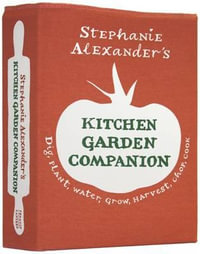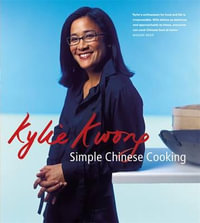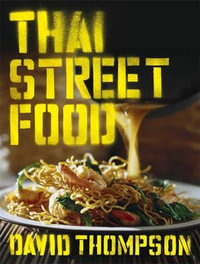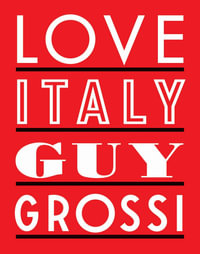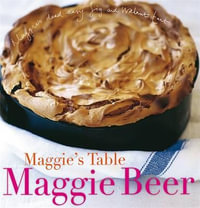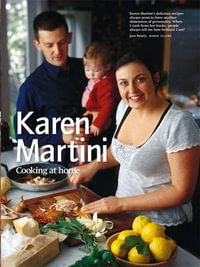
Sorry, we are not able to source the book you are looking for right now.
We did a search for other books with a similar title, however there were no matches. You can try selecting from a similar category, click on the author's name, or use the search box above to find your book.
Giovanni Pilu believes Sardinian cooking should involve fresh produce simply prepared, allowing the full flavour of the ingredients to speak for themselves. Since opening Pilu at Freshwater in 2004, he has expanded his Sardinian repertoire, cooking the food that's in his blood and close to his heart – and it is this food he shares with us in A Sardinian Cookbook.
About the Authors
Giovanni Pilu is one of only two chefs in Australia focusing on Sardinian cuisine. His restaurant, Pilu at Freshwater, has maintained a two-hat rating in the Sydney Morning Herald Good Food Guide since it opened. Giovanni has also been acknowledged for his strong focus on Sardinian produce, including a recent award for his wine list, which also has a Sardinian emphasis.
Roberta Muir manages one of Australia's leading cooking schools, Sydney Seafood School at Sydney Fish Market. She holds a Master of Arts degree in Gastronomy from the University of Adelaide, and is the author of the Sydney Seafood School Cookbook and 500 Cheeses; she also assisted Janni Kyritsis with his cookbook Wild Weed Pie.
The rugged and untamed island of Sardinia has long been a place apart from mainland Italy, separated by language, culture and history, as well as geography. Here the rhythm of life is still largely determined by the seasons, with the year punctuated by the numerous festivals, or feste, held to celebrate local produce and successful harvests, as well as the major religious events of Christmas and Easter. Annual festivals for patron saints are another important part of the calendar and a great excuse for whole villages to come together to cook, eat, drink and enjoy each other's company.
Food, and the hospitality associated with sharing it, is integral to the Sardinian way of life. In Oliena, there's an annual event called cortas apertas ('the doors are open'), when local people open their homes to tourists and demonstrate the making of traditional foods. Following a way of life unchanged for centuries, the women still get up at 4 a.m. and make bread and bake sweets, and the men still milk the sheep then come home for breakfast before going to work (most of them have second jobs). Those who are too old to go to work or make the cheese that is considered essential at every meal, sell the milk – it's a little extra income that helps the family. Keeping a few cows or sheep is still common in Sardinia, even in non-farming households, and most homes have a vegetable garden. Before and after work people tend their garden and animals.
This was the Sardinia I grew up in. We always had a couple of cows, plus some chickens and rabbits – and although my father doesn't have any animals now, he's always had a vegetable garden. I have strong childhood memories of gathering berries, wild greens and herbs from the hedgerows on the way home from school, and of bringing down small birds with our sling shots. Long summer evenings would see us searching streams and creeks for trout and eels.
It was while I was studying to be a draftsman and working summer seasons in my uncle's bar that I realised what I wanted to do with my life, so I spent the next few years gaining some more experience in the kitchens of various resort hotels. Around this time, I met Marilyn Annecchini, who was born in Australia but whose family comes from the Italian region of Abruzzo. She was on a working holiday in Sardinia and we took a summer job together at a restaurant in San Teodoro, on the northeast coast. After the season finished she headed back to Australia . . . and not long after that, I followed.
Arriving in Sydney in 1992, I was full of enthusiasm and passion for the unique flavours of Sardinia. However, I spoke little English and, despite my hospitality experience, had no formal qualifications. We were living with Marilyn's parents in Terrey Hills at the time, and up the road was a restaurant called Il Piemonte, run by Piero Bignasca. He took me on in the kitchen, and that's where I started my apprenticeship, learning cooking and English side-by-side. Many years later when Piero wanted to retire, in a pleasing twist of fate, Lido Russo and I bought the restaurant from him and opened Cavallino, a casual place modelled on an Italian agriturismo (farm guesthouse).
In 1997, I opened my first restaurant, Cala Luna, in Mosman, where I slowly introduced Sardinian specialities alongside more familiar Italian dishes. But it was with the opening of Pilu at Freshwater with Marilyn, in 2004, that I really drew on my Sardinian heritage to offer a menu of Sardinian food, including a tasting menu matched with Sardinian wines.
While there are some uniquely Sardinian ingredients, I firmly believe you can cook Sardinian food anywhere in the world using local produce; this is still regional cooking. There are some specific imported ingredients I use because they aren't available in Australia, but I also think it's essential to support local producers as much as possible. I used to import bottarga, the air-dried mullet roe that gives many Sardinian dishes their distinctive aroma and flavour (see page 93),but now I work with my Sardinian friend Massimo, who lives near Byron Bay, to produce our own; he also makes salumi from Berkshire rare-breed pork, including sausages flavoured with Sardinian Cannonau and Vernaccia wines. (For more information on finding and using Sardinian ingredients, see page 219.)
And when it comes to fruit and vegetables, imported produce may look perfect but often lacks flavour. I go to Sydney's fruit and vegetable wholesale market at Flemington every Tuesday morning, and my suppliers there know I don't want oranges from California or asparagus from Peru. Local farmers are struggling and I feel passionately about supporting them; if it's not in season, please cook something else and look forward to enjoying it when it is next in season.
I'm excited to be able to share with you the distinctive regional cooking of Sardinia, a place where dialects, traditions and cooking vary from one province – in fact, from one town – to the next. The dishes in this book are mostly from the province of Sassari, especially around my hometown of Sotza, in the region of Gallura. Throughout the book, I've given recipe titles in my dialect and in English, but people from other parts of Sardinia will oft en know the same dish by different names. But really, it doesn't matter what you call a dish. What matters is to cook it using the best seasonal produce you can find, and then to enjoy it with friends, family and good wine.
In Sardinia, almost any occasion offers a reason to eat and drink, and one of the things I miss most is casual weekend gatherings with friends. These usually involved plenty of good wine and high spirits, and we would often stay up late, feasting and drinking. I hope my recipes will encourage you to do the same with your friends and family, and to experience for yourself a taste of Sardinia.
Buon appetito!
ISBN: 9781921382598
ISBN-10: 1921382597
Published: 22nd August 2012
Format: Hardcover
Language: English
Number of Pages: 240
Audience: General Adult
Publisher: Penguin Books Australia
Country of Publication: AU
Edition Number: 1
Dimensions (cm): 29.4 x 24.1 x 2.4
Weight (kg): 1.41
Shipping
| Standard Shipping | Express Shipping | |
|---|---|---|
| Metro postcodes: | $9.99 | $14.95 |
| Regional postcodes: | $9.99 | $14.95 |
| Rural postcodes: | $9.99 | $14.95 |
How to return your order
At Booktopia, we offer hassle-free returns in accordance with our returns policy. If you wish to return an item, please get in touch with Booktopia Customer Care.
Additional postage charges may be applicable.
Defective items
If there is a problem with any of the items received for your order then the Booktopia Customer Care team is ready to assist you.
For more info please visit our Help Centre.

